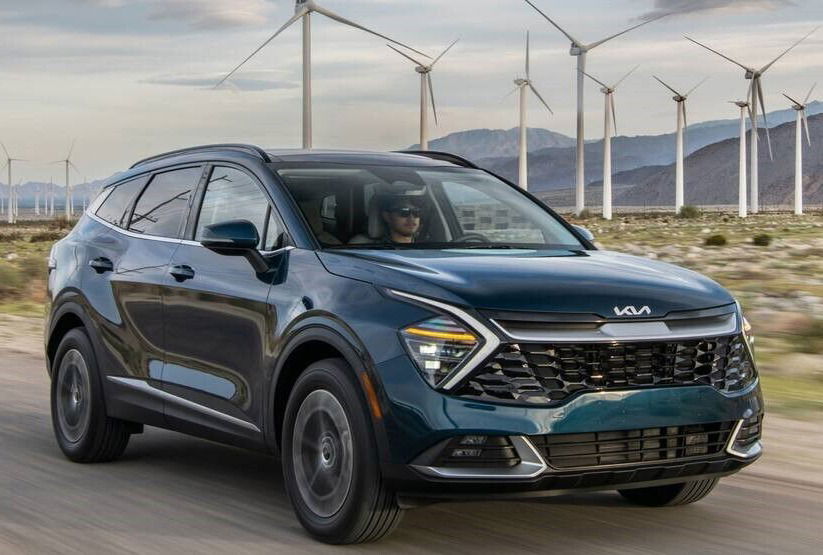Awards Don't Tell the Whole Story
The 2025 Kia Sportage Hybrid has just been lauded as a “Best Hybrid for the Money” by Cars.com, praised for its affordability, spacious interior, and hybrid efficiency . However, beneath the accolades lies a hard to ignore discrepancy: its real-world fuel economy often falls short of EPA estimates. This, in our opinion, undermines the Sportage's value proposition as a hybrid.
This flaw is rarely acknowledged in glowing reviews about the new Sportage. While Kia promises up to 44 mpg highway, independent tests reveal a 7–9 mpg deficit in real-world driving, particularly in AWD models .
More than just a technicality, this gap represents a financial pitfall. Over 15,000 miles, the Sportage Hybrid’s spotty inefficiency could cost drivers $300+ extra annually in fuel, eroding its “best value” claim. Competitors like the Toyota RAV4 Hybrid deliver consistent 40+ mpg, exposing Kia’s hybrid system as overly reliant on its turbocharged engine . For buyers seeking true efficiency, the Sportage Hybrid’s hidden shortfall is impossible to ignore.
See also:
The Promise vs. Reality Of MPG

Admittedly, the Sportage Hybrid’s EPA ratings are impressive:
- 42 mpg city / 44 mpg highway (FWD)
- 38 mpg city/highway (AWD)
Yet, independent tests reveal a different story:
Car and Driver recorded 31 mpg in a 75-mph highway test with AWD. That's 7 mpg below the EPA rating.
Consumer Reports noted 36 mpg overall (still good but far from the 43 mpg combined claim).
Edmunds’ testing also showed 34 mpg in AWD models.
This gap is significant because hybrid buyers bank heavily on fuel savings. The Sportage Hybrid’s inability to consistently deliver on its EPA numbers places it behind rivals like the Toyota RAV4 Hybrid (40+ mpg real-world) and Honda CR-V Hybrid (38–40 mpg) .
Furthermore, the Sportage’s driving dynamics reveal a fundamental compromise – its turbocharged 1.6L engine and transmission tuning prioritize initial pep over refinement, resulting in a coarser power delivery compared to the seamless eCVT systems of its rivals. This manifests in noticeable engine drone during acceleration, a trait absent in the eerily quiet operation of the CR-V Hybrid’s twin-motor setup or the RAV4’s polished hybrid synergy drive.
The Sportage's chassis tuning further illustrates its identity crisis. While Kia has softened the suspension for comfort, it hasn’t matched Honda’s masterful balance of ride compliance and handling precision.
The CR-V Hybrid maintains superior body control through corners and better isolates road imperfections, while the RAV4 offers more confident off-road capability with its available torque-vectoring AWD system. The Sportage’s steering, though improved over previous generations, still lacks the natural weighting and feedback that make the Honda feel more connected to the road.
See also:
These dynamic shortcomings are compounded by ergonomic oversights. The Sportage’s infotainment system suffers from distracting touch-sensitive controls and slower response times compared to Honda’s intuitive dual-screen setup or Toyota’s improved Entune system.
Cabin materials reveal more hard plastics in high-touch areas than either competitor, and while Kia’s warranty coverage remains best-in-class, it can’t compensate for the Toyota’s proven long-term durability or Honda’s reputation for trouble-free ownership. Even the Sportage’s celebrated design comes at a cost – its rakish roofline compromises rear headroom and cargo versatility compared to the more upright, functional profiles of its Japanese rivals.
Why This Flaw Is Unignorable
The 2025 Kia Sportage Hybrid’s fuel economy gap isn’t just a minor quirk—it’s a fundamental flaw that undermines its core value proposition. A 7 mpg deficit compared to EPA estimates translates to $300+ in extra annual fuel costs for the average driver, eroding its "Best for the Money" accolades over time.

Over five years, that’s $1,500 wasted—enough to cover insurance premiums or maintenance, negating its upfront affordability.
Worse, the issue stems from poor powertrain calibration. Unlike rivals like the Toyota RAV4 Hybrid, which seamlessly prioritize electric assist, the Sportage Hybrid’s turbocharged 1.6L engine aggressively takes over under moderate loads, sabotaging efficiency gains. This engineering misstep is glaring in real-world driving, where the system feels less refined and more combustion-dependent .
The AWD model’s inefficiency compounds the problem. While most hybrids see a modest drop with all-wheel drive, the Sportage’s penalty is disproportionate—38 mpg combined vs. 43 mpg (FWD)—a gap rarely highlighted in awards.
For buyers seeking true hybrid savings, this inconsistency is a dealbreaker, especially when competitors like the Honda CR-V Hybrid maintain steadier performance across drivetrains . These flaws aren’t just statistical nitpicks; they’re tangible compromises that redefine the Sportage Hybrid’s value.
The Oversight In Awards

Recognition like Cars.com’s “Best for the Money” often relies on EPA numbers and MSRP, not real-world testing. The Sportage Hybrid’s low price ($28,790) and generous features make it a tempting pick, but the fuel economy gap is a silent trade-off .
Even proponents acknowledge the issue:
- Car and Driver: “We expected better fuel efficiency from its hybrid powertrains”.
- Consumer Reports: “The hybrid is the best Sportage, but it’s not class-leading in efficiency”.
- MotorTrend: The plug-in hybrid’s 34-mile EV range is “average” at best, further highlighting Kia’s hybrid tech lag .
Our Verdict
The Sportage Hybrid is a good SUV, but its fuel economy shortcomings undermine its “best for the money” title. Awards often overlook real-world performance, and buyers relying on EPA numbers may feel shortchanged. For true hybrid value, competitors like the RAV4 Hybrid or CR-V Hybrid deliver more consistent efficiency—a fact even experts concede.
The Sportage Hybrid's fuel economy gap is its Achilles' heel,asked by shiny awards but undeniable in practice.